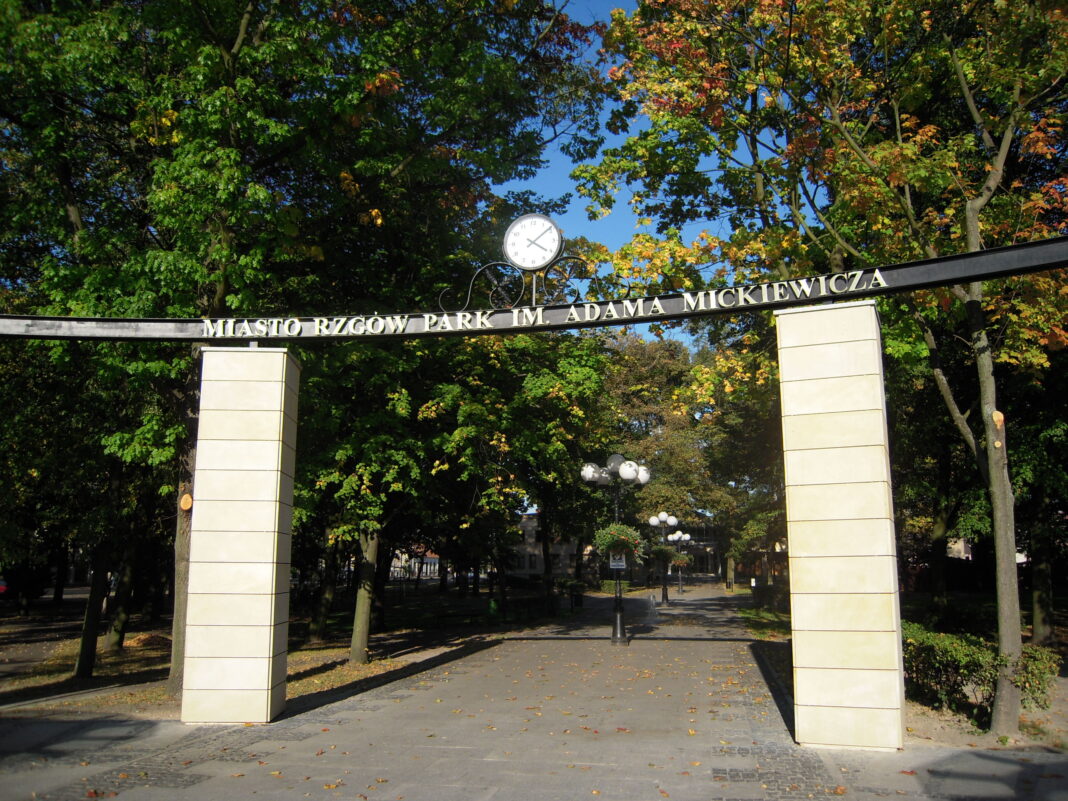When designing significant and iconic spaces or restoring the grandeur of historic buildings, it is common to overlook the importance of preserving and enhancing the ecosystems necessary for cities to adapt to climate change. Rzgów, a town in central Poland, has taken a different approach. A thorough understanding of the local community’s needs and aspirations has brought a remarkable result.
A renaissance of Rzgów
During the Renaissance, the town of Rzgów thrived as a centre of agriculture, crafts, and trade. However, wars and crises in later centuries led to its decline and it turned into a village.
At the end of the 20th century, though, Poland’s independence from the USSR and the country’s rapid development helped Rzgów regain its former strength and it became the largest textile trade centre in Europe. As a result, it was granted municipal rights again in 2006. Taking pride in these achievements, the local community wanted to restore the splendour of the town’s main square, which had become somewhat neglected over time and turned into a park.

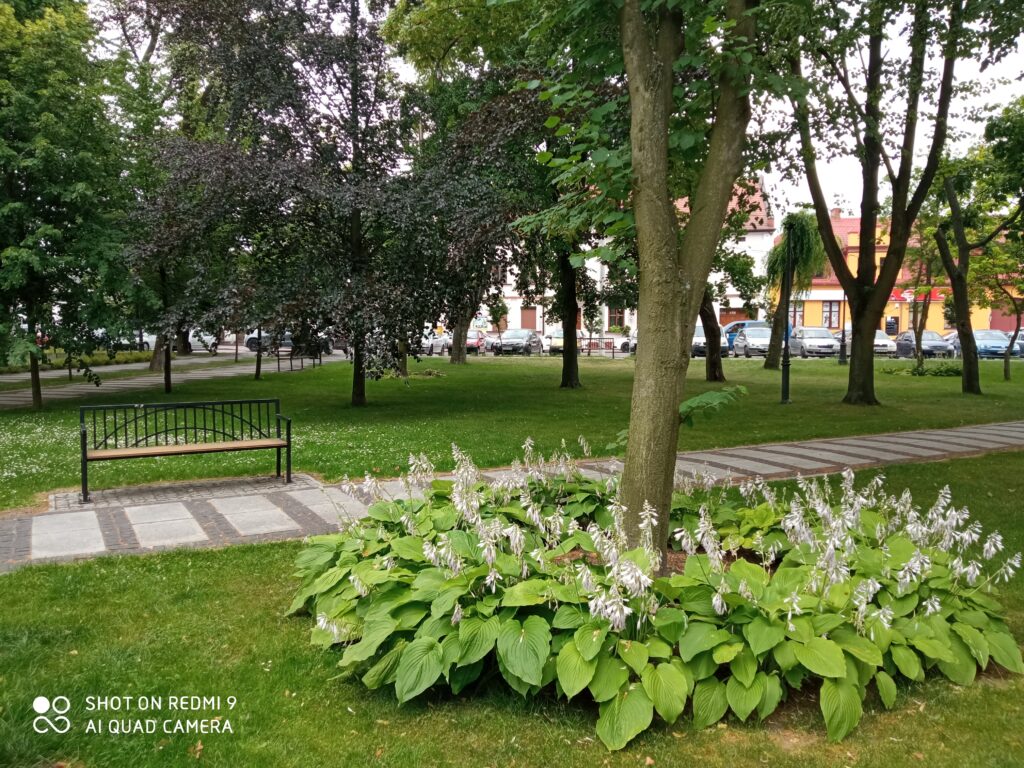
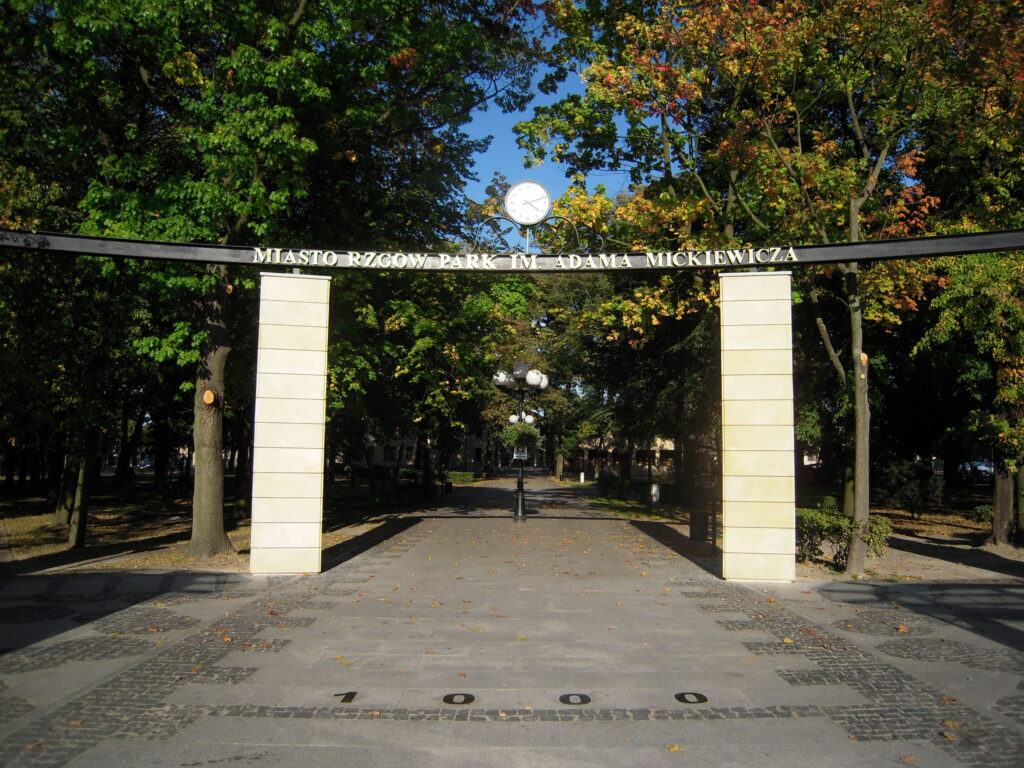
What often happens in such situations is that trees are cut down to restore the old order. It is a common practice known in Poland as: “concrete sickness”. The term is also used to describe the lack of living greenery in urban areas.
“Concrete sickness” can be observed in various forms all over the world. It can be seen in old districts, where trees are not allowed to be planted so as not to obscure monuments and disturb the perception of space – this form is present mainly in Europe.
In modern urban developments, greenery is sometimes relegated to a secondary role due to the prominence of modern architecture and its symbolic function. This trend is particularly evident in the rapidly growing metropolises of Asia.
There are cities where nature has been forced to retreat in the face of urban motorways, concrete flyovers and car parks – this type of “concrete sickness” originates from the United States.
The result of “concrete sickness” is a space that is unfriendly, unbearable in hot weather, and lacking in visual interest. Wherever human achievements attempt to dominate nature, the consequences are negative for both people and the natural world.
Rzgów, however, has avoided this fate by drawing inspiration from the Renaissance tradition.
Smartly restored grandeur
The architects of FormArt studio – Maciej Musiał, Piotr Gajewski and Krzysztof Golec – proposed an optimal solution for both people and the ecosystem: preserving trees, shrubs, and grass while minimizing paved areas. Two wide avenues form a visual axis towards the town hall and the beautiful late Renaissance church – the pride of Rzgów. An ornamental gate at the main entrance, a hedge, and a low wall compositionally complete the design and prevent the grass from being trampled. The smaller diagonal alleys and entrances were designed after observing the directions of pedestrian traffic – from a bird’s-eye view, the layout of the space resembles a Renaissance composition.
References to this era are also hidden in the details. The gate and walls, made of sandstone, are designed to echo the style of the historic church. The pattern on the ground of the small square at the intersection of the main avenues, which serves as a venue for local celebrations, was inspired by the characteristic vault of the church.
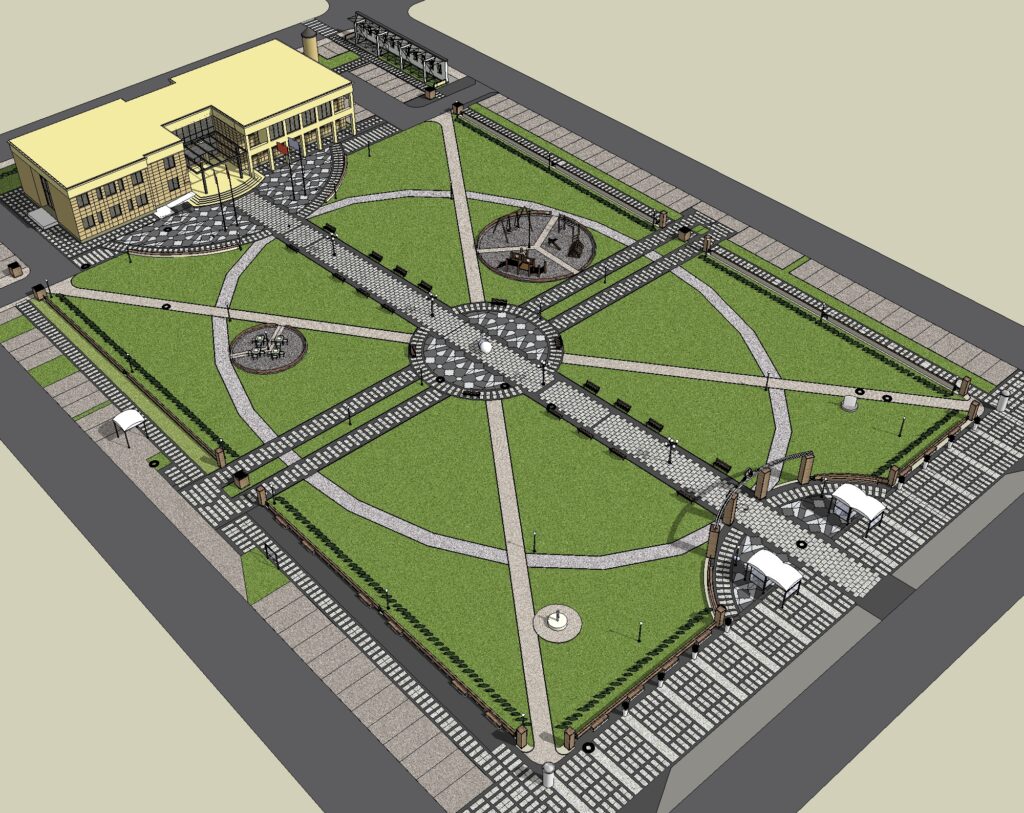
This same material and style were also used in the earlier restoration of the town hall, resulting in stylistic consistency throughout the area.
The completed development is not only a real park where visitors can take a break from the heat, but also a representative urban square that pays tribute to traditions important to the local community. The richness of the ecosystem harmoniously blends with the richness of social life. It has turned out that it is easier to meet diverse needs among trees, shrubs, and flowers. In addition to the natural elements, the design includes features that enhance the functionality and appeal of the square, such as information boards on the history of Rzgów, a serene fountain, a children’s playground, a kiosk, and a bus stop. The benches, situated in the shade of the trees, offer a comfortable place to sit and enjoy the tranquil surroundings. These essential elements have created a more cohesive whole than one would expect in a “traditional” town square. Here, visitors can bask in the peace and tranquillity of nature, which were highly valued by Polish Renaissance poets. One can experience the order and harmony resulting from the application of the ancient virtue of moderation, reminiscent of those of the old masters.
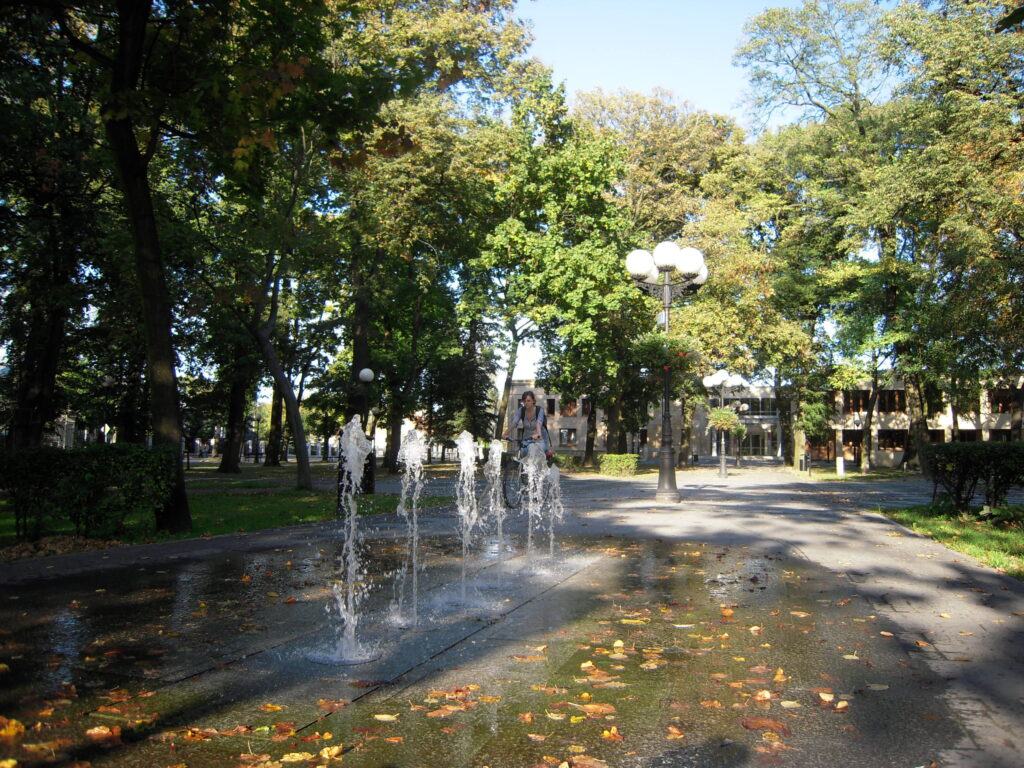
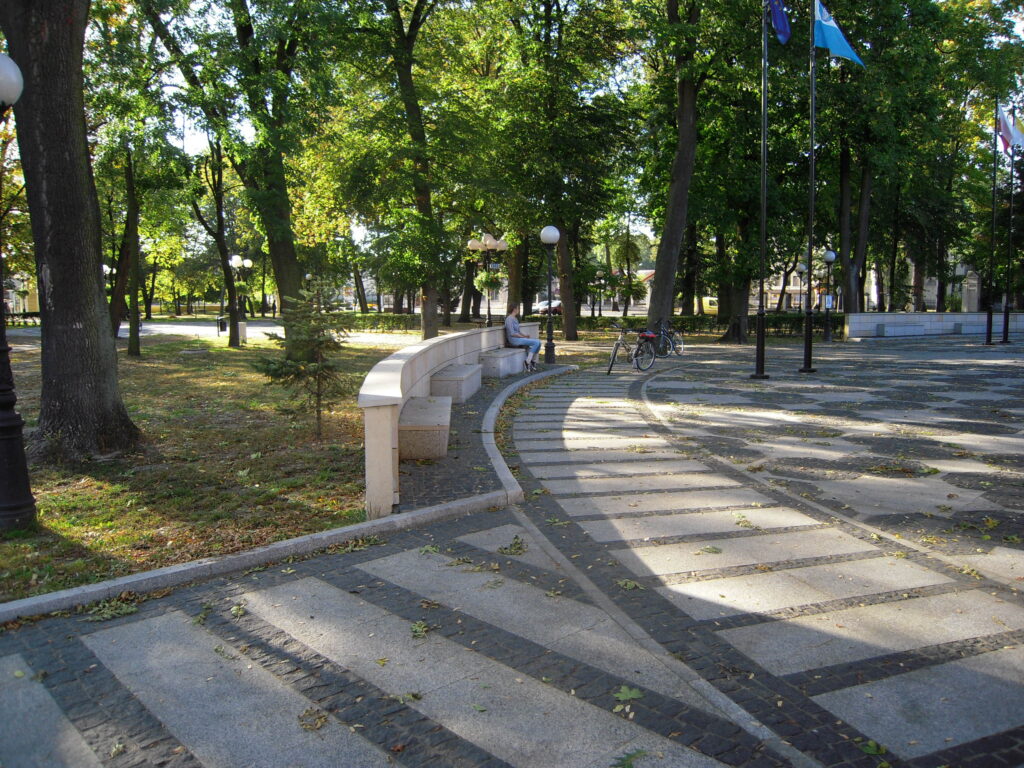
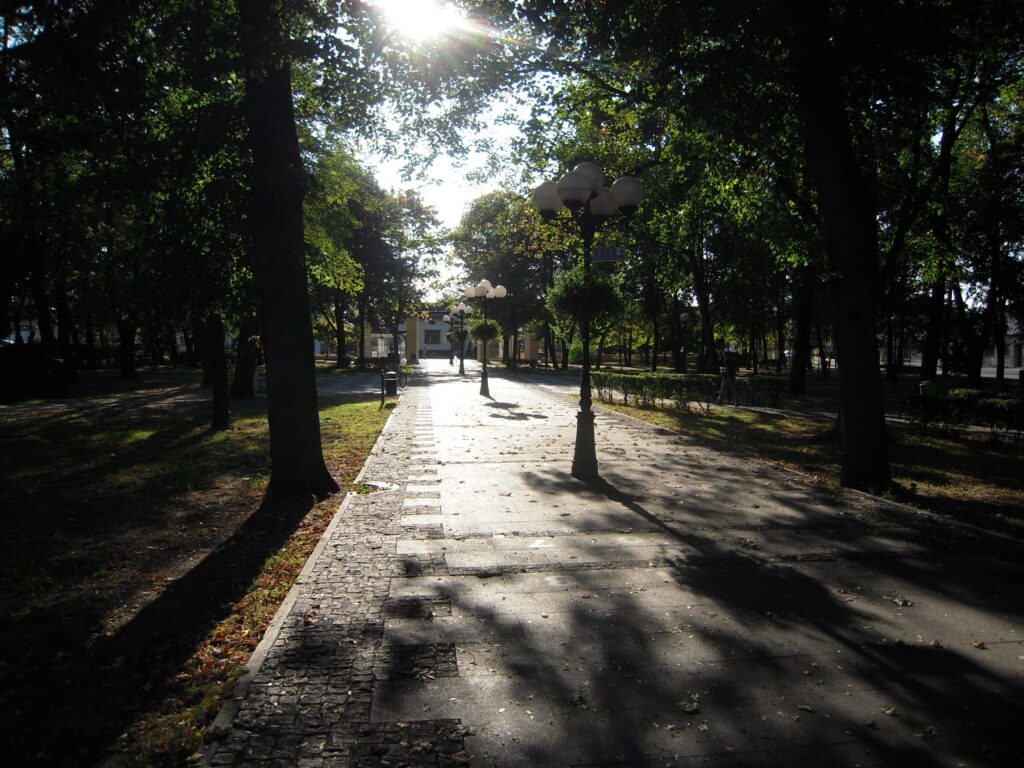
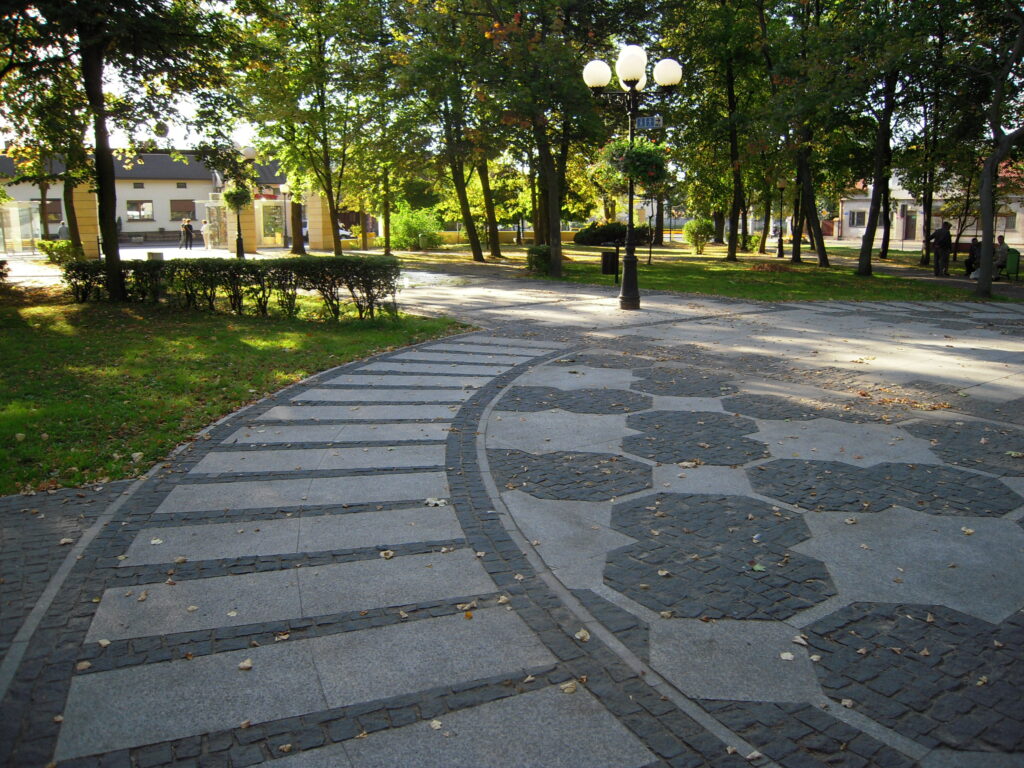
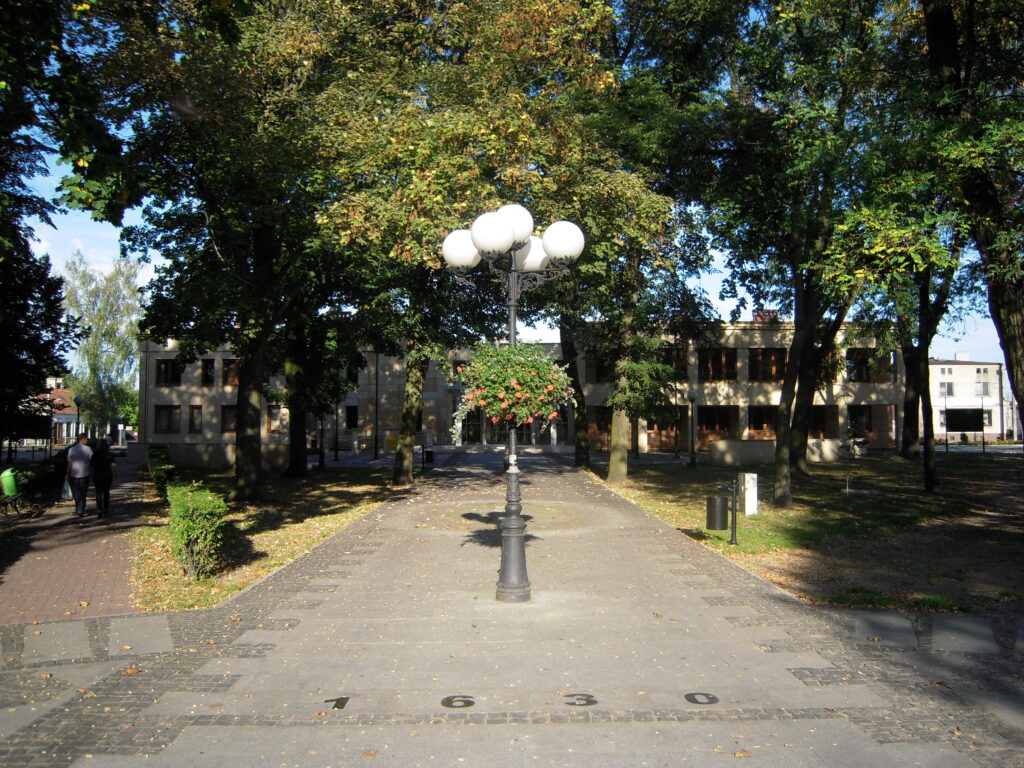
Rzgów is currently part of the international network of towns and cities called “Cittaslow”, which promotes a more balanced and sustainable way of living, with a focus on quality of life, while respecting traditions. This movement, which came to Poland from Italy, echoes the style and philosophy of the Renaissance.
The excellent urban space in the centre and the ongoing dialogue between local authorities, entrepreneurs, and small local communities ensure that this small town continues to develop dynamically. In a ranking of Polish towns and cities belonging to the “Cittaslow” network, Rzgów took first place in terms of socio-economic potential.
All towns and cities in the world deserve such a renaissance.
A path worth following
The example of Rzgów shows that by drawing upon the finest local, national, and supranational traditions, it is possible to achieve a state in which the well-being of the planet and the well-being of people are united.
Too often, environmental protection is viewed as a secondary concern that must yield to the “primary” needs and aspirations of individuals, communities, and nations.
On the other hand, those with a high environmental awareness often tend to hastily diminish the importance of these aspirations and needs.
It is good and rightful that people aspire to be strong, prosperous, and happy, that local communities emphasize the importance of their collective identity, and that nations, regaining their importance and strength, express pride in their cultural heritage and identity through urban spaces.
It is wonderful that people have a desire to live in close proximity to nature, breathe fresh air, experience serenity among greenery, and pass on these values to future generations.
It is essential to possess the wisdom to know how to create the space to realise all these natural aspirations in harmony, replacing competition and conflict with cooperation and partnership.
The success story of Rzgów highlights the importance of this approach for achieving prosperity.
To make a positive impact on the world, it is crucial to engage with people. Understand their needs and appreciate their aspirations. Rather than judging them hastily, you should strive to make the good in yourself meet up with the good in them.
Doing so, we can work on a brighter future for both people and the planet, through partnership and prosperity, towards global peace.







